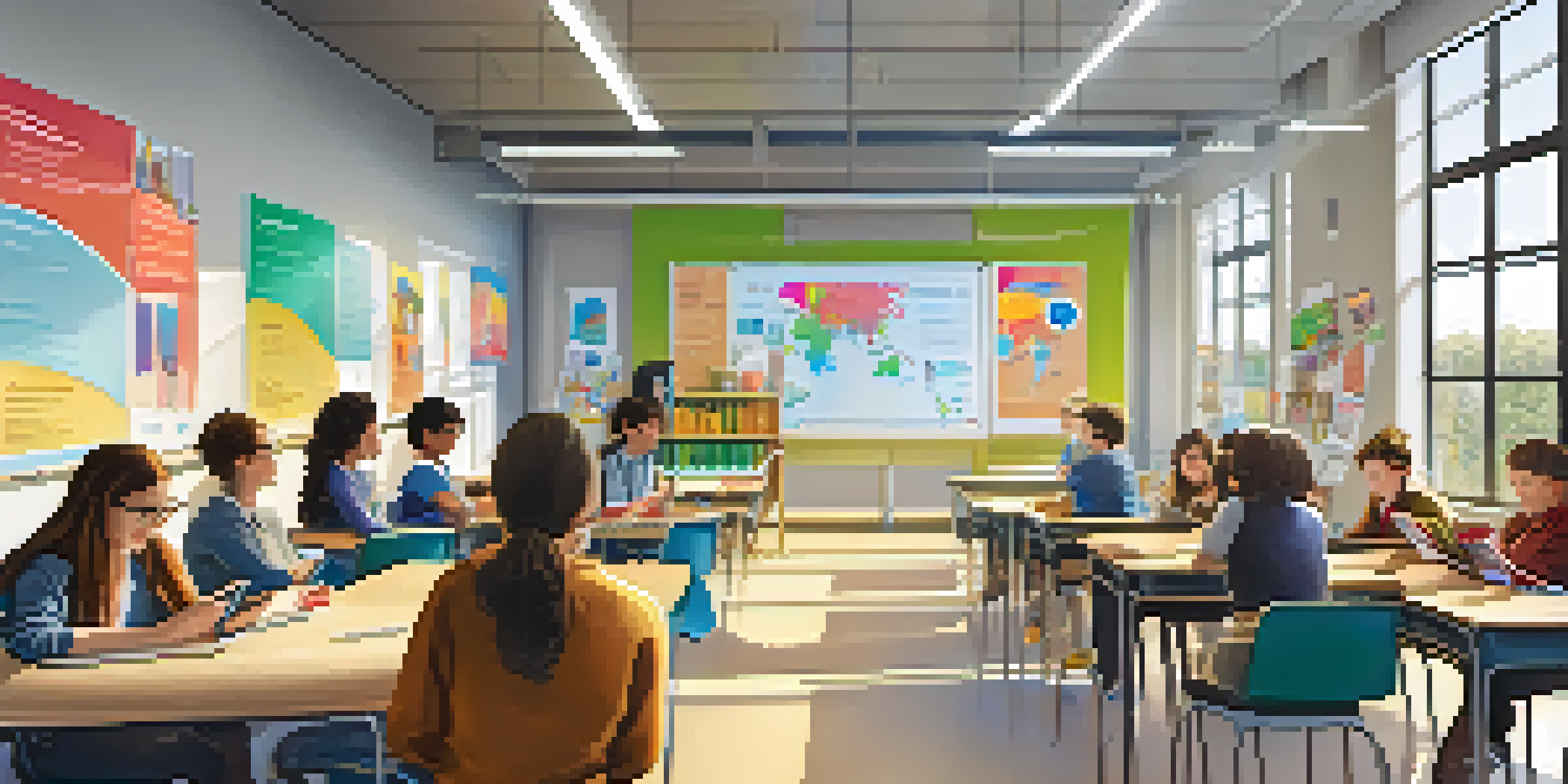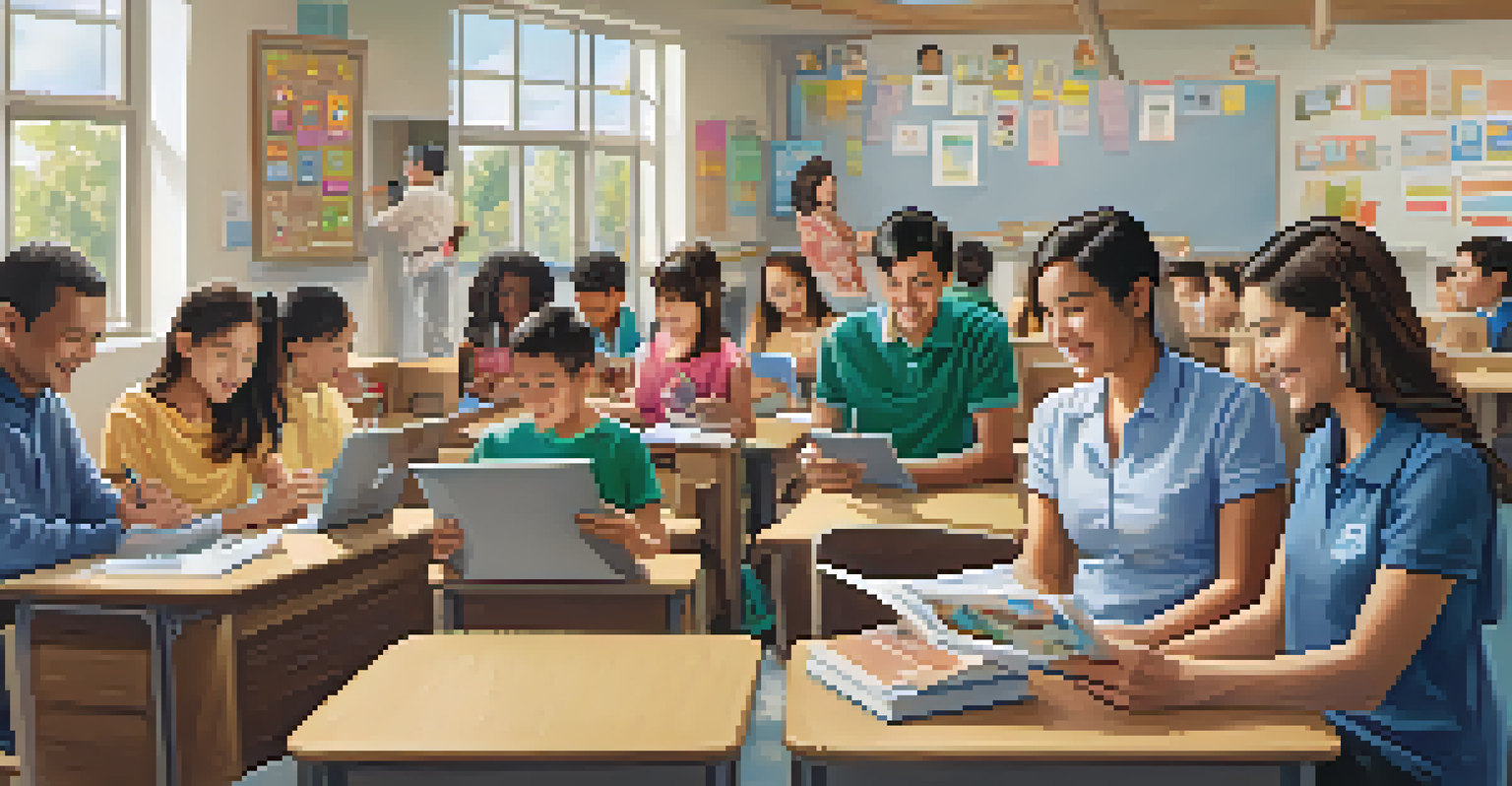Enhancing Teacher-Student Communication with Digital Tools

Why Effective Communication Matters in Education
Effective communication in education is the bedrock of successful learning. When teachers and students communicate openly, it fosters an environment of trust and understanding. This relationship can lead to improved academic performance and a positive classroom atmosphere.
The single biggest problem in communication is the illusion that it has taken place.
Moreover, clear communication helps address students' concerns promptly, allowing them to feel heard and valued. It's not just about transmitting information; it's about creating a dialogue that encourages student engagement. As a result, both teachers and students can thrive in their educational journey.
Ultimately, enhancing communication leads to stronger relationships, which are essential for a productive learning experience. Digital tools can significantly aid in bridging the communication gap, making it easier for educators and learners to connect effectively.
Digital Tools: A Game Changer for Communication
In today’s tech-savvy world, digital tools have revolutionized how teachers and students interact. Platforms like Google Classroom and Microsoft Teams allow for seamless sharing of resources and feedback, making communication more efficient. These tools serve as a central hub where all parties can engage and collaborate.

Additionally, many of these platforms feature real-time messaging and video conferencing capabilities. This means that whether it’s a quick question or a more in-depth discussion, students can reach out to their teachers instantly. Such immediacy helps in clarifying doubts and reinforces the learning material.
Communication Builds Trust
Effective communication fosters a trusting environment that enhances both teacher and student engagement.
The use of digital tools not only streamlines communication but also makes it more accessible. Students can communicate from anywhere, breaking down geographical barriers and accommodating different learning styles. This flexibility is crucial in today’s diverse educational landscape.
Fostering a Collaborative Learning Environment
Digital tools also promote collaboration among students, which is essential for developing social skills and teamwork. Platforms like Padlet or Miro allow students to share ideas and work together on projects, fostering a sense of community. This collaborative spirit enhances learning by encouraging peer support and diverse perspectives.
Technology is best when it brings people together.
When students engage with one another, they’re more likely to take ownership of their learning. They learn to articulate their thoughts and respect differing viewpoints, which are critical life skills. Teachers can facilitate these interactions by guiding discussions and providing constructive feedback in real time.
In essence, collaboration through digital tools not only enriches the learning experience but also prepares students for future challenges. They learn to communicate effectively in group settings, a vital skill in both academic and professional contexts.
Enhancing Feedback Mechanisms with Technology
Feedback is a crucial component of the learning process, and digital tools can enhance this aspect significantly. Tools like Edmodo and Socrative enable teachers to provide timely and personalized feedback, allowing students to understand their progress better. This immediate response can motivate students to improve and stay engaged.
Moreover, these platforms often allow for anonymous feedback, giving students the freedom to express their thoughts without fear of judgment. This can lead to more honest communication, helping teachers identify areas for improvement in their teaching methods. By creating a safe space for feedback, educators can nurture a culture of continuous improvement.
Digital Tools Enhance Collaboration
Platforms like Google Classroom facilitate seamless interaction, promoting teamwork and peer support among students.
With digital tools, feedback becomes a two-way street. Students can also provide input on their learning experiences, giving teachers valuable insights into what works and what doesn’t. This collaborative feedback loop is essential for fostering an adaptive learning environment.
Using Social Media to Enhance Connections
Social media, often seen as a distraction, can actually be a powerful tool for educational communication. Platforms like Twitter and Instagram can be used to share resources, celebrate student achievements, and foster a sense of community. By creating dedicated hashtags or groups, teachers can engage with students and parents in a more informal setting.
These platforms allow for sharing content that resonates with students, making learning more relatable. For instance, a teacher might share a relevant article or video on Instagram, prompting discussion in the classroom. This approach not only enhances engagement but also keeps the lines of communication open.
However, it’s essential to establish guidelines for using social media in an educational context. By setting clear expectations, teachers can create a positive online environment that enhances learning. With the right approach, social media can bridge the gap between formal and informal education.
Encouraging Parent-Teacher Communication through Digital Tools
Parent-teacher communication is vital for student success, and digital tools can facilitate this connection. Platforms like ClassDojo or Remind enable teachers to keep parents informed about their child’s progress and classroom activities. This transparency helps parents feel more involved in their child’s education.
Through these tools, educators can easily share important updates, upcoming events, and even student achievements. This consistent communication fosters a partnership between parents and teachers, creating a supportive network for students. When parents are engaged, students are more likely to excel academically.
Feedback Fuels Student Success
Timely and personalized feedback through digital tools keeps students motivated and engaged in their learning journey.
Additionally, these platforms often allow for direct messaging, making it easier for parents to ask questions or voice concerns. This open line of communication not only strengthens relationships but also promotes a collaborative approach to education, benefiting everyone involved.
Best Practices for Implementing Digital Tools
While digital tools offer numerous benefits, it’s essential to implement them thoughtfully. Teachers should start by selecting tools that align with their teaching goals and the needs of their students. It’s also important to provide training for both educators and students to ensure everyone feels comfortable using these resources.
Regularly assessing the effectiveness of the tools is crucial as well. Gathering feedback from students and parents can help identify what’s working and what needs adjustment. By remaining flexible and open to change, educators can optimize their communication strategies.

Lastly, setting boundaries around technology use is vital. While digital tools can enhance communication, it’s essential to maintain a balance to prevent burnout. Encouraging breaks from screens and promoting face-to-face interactions can create a well-rounded educational experience.